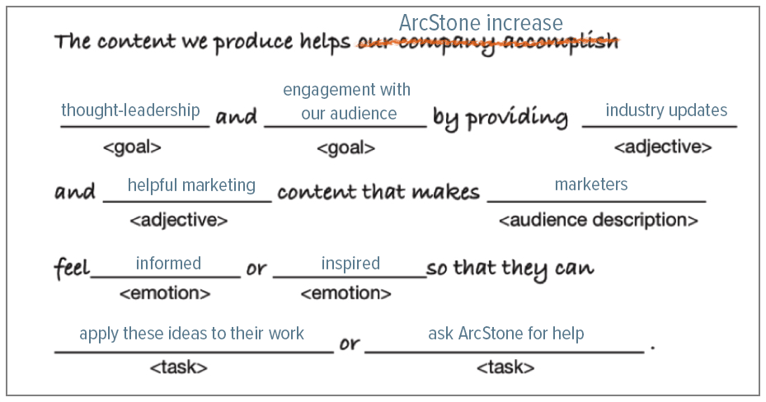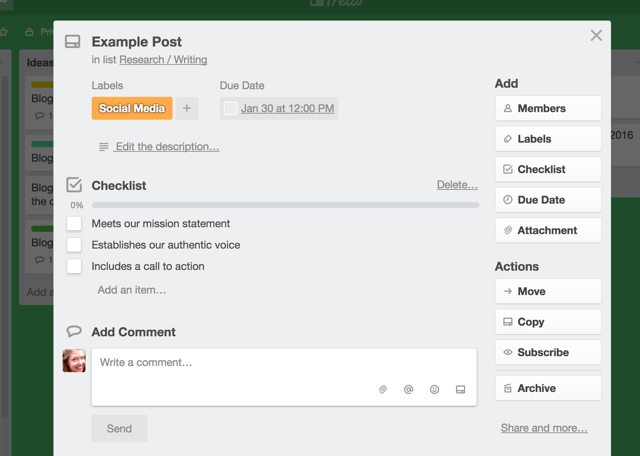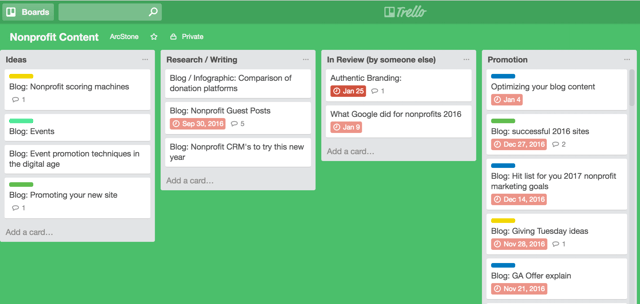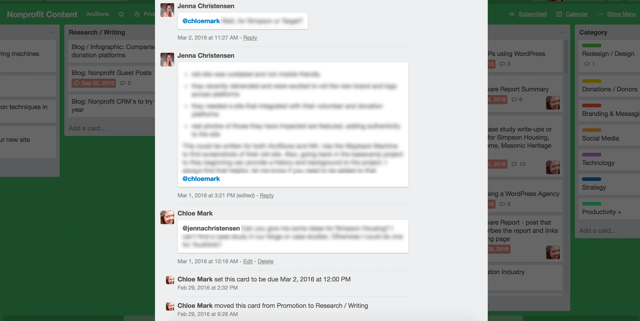As marketers in the digital age, most of us understand the value of content marketing. In hopes of seeing the much-talked-about impact of blogging, we even take several hours each week building up our content. However, one unfortunate truth to this effort is that some of these posts don't get the traffic or see the conversions we hope for, and some don't even get read.
Your need: effective, conversion-heavy blog traffic.
Your answer: a simple content development process you can count on.
-4.png?width=640&name=Copy%20of%20NONPROFITS%20(2)-4.png)
This content development process involves five pieces. It starts with your statement around which your whole strategy will revolve. From there, you need a plan of action and checklist to keep you and your writing team on the same page. Finally, a strong content strategy takes analysis and continual development. Let's get started.
It all starts with a statement
Many times when we finally find time to sit down and write a post, we take a long time to actually start writing – the pressure is on and we frantically ask what should this post address? Sometimes when we're really struggling to come up with the perfect topic, we forget why we're even writing it in the first place. Before this happens again, establish your content's purpose.
Meghan Casey of Content Marketing Institute came up with a Madlib exercise to help. She emphasizes this doesn't mean you come up with a single, permanent statement. Unlike a your company's mission statement, this one is more malleable, changing based on your initiative at that time, the performance of previous content and the like. See how this works:

Image source: Content Marketing Institute
I like this exercise as it helps in getting back to the basics. Sometimes we get so bogged down by the details that we can't even think straight. By simply filling in the blanks, we can hone in on why our content matters.
To help you better understand this template, I filled it out for this post you are reading now.

Make sure this statement is met
Okay so you have a clear statement of your content's purpose, but that could easily get swept under the rug. How can you hold yourself and your co-writers accountable?
Using a content management tool (read about our favorites here) or even just a Google Doc, create a checklist for each of your posts. Each post should:
- Meet the requirements of the mission statement you came to above
- Come from your company's perspective and fit your style guide
- End with or (at least include) a call to action relevant to the mission statement's goals
Our current favorite tool that could work for this checklist is Trello. With each card, you can create a checklist as seen below:

Keep your content organized
Let's be honest: if you don't establish a system, it's unlikely your content will stay consistent or that you'll keep checking off that to-do list. If you have a system set up, each time you sit down to write, you'll have a stronger place to start. Trello helps us as we develop content for The Nerdy Nonprofit. With this tool, you can...


- plan out your content calendar

Tracking analytics & optimizing accordingly
One piece of the content puzzle many of us neglect is the follow-up process. In order to do a better job with each post you write, you need to analyze your previous work. If this is a step you struggle with, consider setting up a better Google Analytics dashboard and scheduling a weekly check-in with your account.
If you're not convinced on the importance of this step, check out TrenDemon's post. They took the information they got from analytics and made a change to their content strategy, resulting in a 400% increase in conversions within just 42 days. See the study here.
As you can see through TrenDemon's work and will see if you try this yourself, the more you can hone in on what's converting readers, and adapt your content accordingly, the more efficient you will be at creating the content that works. In the end, this also means a higher content marketing ROI.
Revisiting the statement
What Meghan Casey made sure to state in her Madlib exercise explanation was that this content mission statement was something that should continually evolve. Maybe you adjust your statement according to the type of year – if your busy season is in the fall, your content prior to that might be more educational and your content following would be more focused on customer success stories. If you're reviewing your analytics and realize your audience likes one type of content more than the other, your mission statement can adapt to fit their preferences.
Whatever it may be, find a statement that inspires content that a) your audience wants and b) converts them into followers, subscribers or customers. Use that statement to guide your topic choices and your writing process. Check in on your data so you know if this is working and to find where you can make improvements. Finally, don't forget to reiterate according to your audience's needs and business' goals.